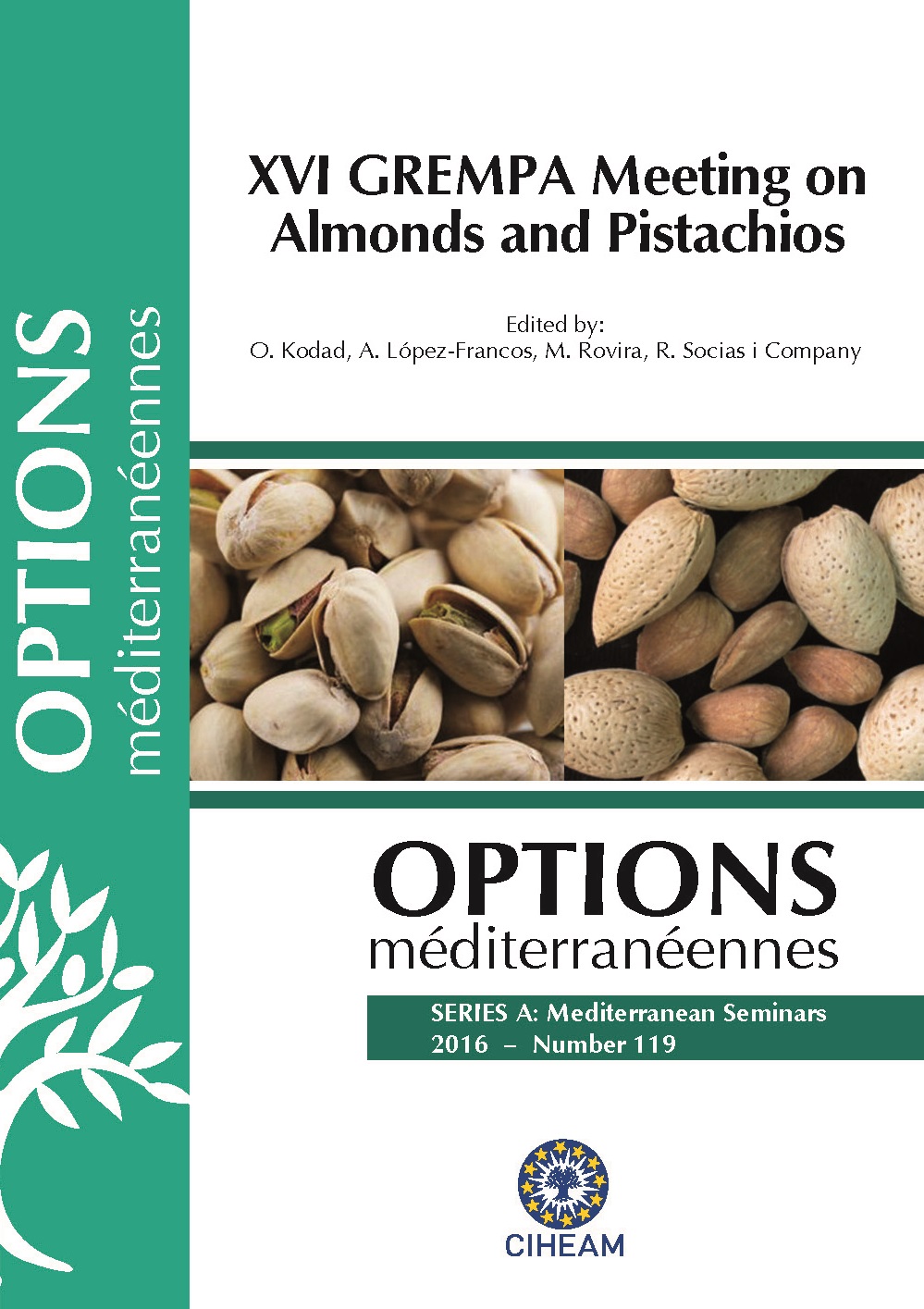| Article précédent | p. 233-236 | Article suivant |
Sanitary status of Spanish autochthonous almond cultivars and its implication in breeding strategies
Traditional almond cultivars are an interesting source of different traits for breeders. These old cultivars have been multiplied by grafting for a long time and usually have been accumulating different viruses. The objective of this work is to determine the presence of different virus in these cultivars by multiplex RTPCR. Virus analysed included: Apple chlorotic leaf spot virus (ACLSV), Plum pox virus (PPV), Apple mosaic virus (APMV), Prunus necrotic ring spot virus (PNRSV), Prune dwarf virus (PDV), Apricot latent virus (APLV), Plum bark necrosis and stem pitting-associated virus (PBNSPaV), and American plum line pattern virus (APLPV). The obtained results showed the generalized presence of PNRSV and PDV in the analyzed collections with a preesence of 90% and 68% respectively. Despite of these virus do not show noticeable symptoms in the tree nor fruits, these poor phytosanitary state urge to the adoption of new estrategies for elimination of virus and cleaning these materials.
Les cultivars d’amandier traditionnels sont une source intéressante de différents traits pour les éleveurs. Ces anciens cultivars ont été multipliés par greffage depuis longtemps et généralement ils ont accumulé des virus différents. L’objectif de ce travail est de déterminer la présence du virus dans ces différents cultivars par RT-PCR multiplex. Les virus analysés on été: Apple chlorotic leaf spot virus (ACLSV), Plum pox virus (PPV), Apple mosaic virus (APMV), Prunus necrotic ring spot virus (PNRSV), Prune dwarf virus (PDV), Apricot latent virus (APLV), Plum bark necrosis and stem pitting-associated virus (PBNSPaV), et American plum line pattern virus (APLPV). Les résultats obtenus montrent la présence généralisée de PDV et PNRSV dans les collections analysés avec une présence de 90% et 68% respectivement. Malgré que ces virus ne présentent pas de symptômes visibles dans l’arbre, ni dans les fruits, le pauvre état phytosanitaire exhorte à l’adoption de nouvelles stratégies pour l’élimination de virus et de nettoyage de ces matériaux.
- [ Afficher ]
- [ Télécharger ]
- [ Exporter la citation ]
Vous pouvez télécharger la citation au format :
- [ Imprimer ]
-
Mots-clés
PRUNUS AMYGDALUS, VIRUSCiter cet article
Rubio M., Martínez-Gómez P., Romero A., Batlle I., Dicenta F. Sanitary status of Spanish autochthonous almond cultivars and its implication in breeding strategies. In : Kodad O. (ed.), López-Francos A. (ed.), Rovira M. (ed.), Socias i Company R. (ed.). XVI GREMPA Meeting on Almonds and Pistachios. Zaragoza : CIHEAM, 2016. p. 233-236. (Options Méditerranéennes : Série A. Séminaires Méditerranéens; n. 119). 16. Meeting of GREMPA (Groupe de Recherches Méditerranéennes pour l\'Amandier et Pistachier / Mediterranean Research Group for Almond and Pistachio), 2015/05/12-14, Meknes (Morocco) . http://om.ciheam.org/om/pdf/a119/00007398.pdf



